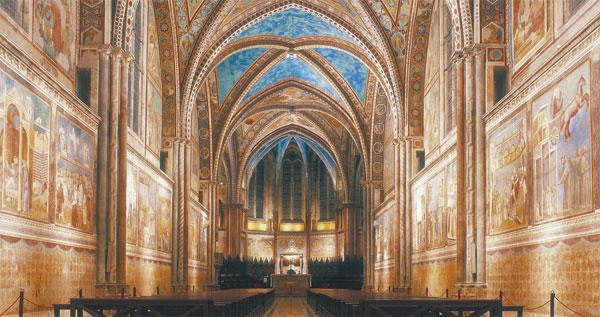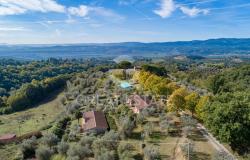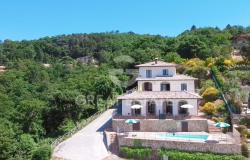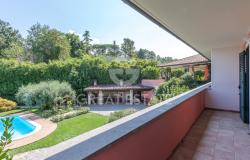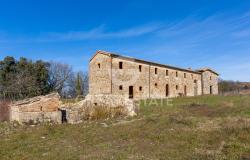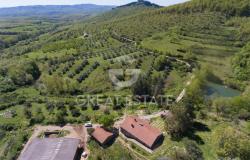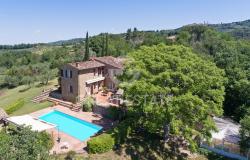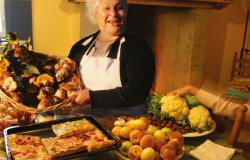The atmosphere around Assisi is very difficult to put into words. It is the birthplace of St. Francis, patron saint of Italy, and is one of the most visited places in the world. Yet Assisi manages to retain a feeling of peace and tranquil- lity amid the souvenir shops and tourist tack. The spirit of St. Francis seems to be present, especially in the early dawn hours, and at dusk when the coaches have departed and Assisi’s children play football in front of the many churches connected with the life of the great saint.
Alain de Botton coined the phrase ‘status anxiety’ to describe the modern condition of comparing personal wealth and possessions relative to others. Assisi is the place to lose your status anxiety, to restore your balance when you feel caught up in the race for success. Set in one of the most beautiful landscapes in the world, at the top of Mount Subasio, Assisi is a perfect place to relax and contemplate nature. The air is fragrant and there are many walks that offer a view across the fertile valley to Lake Trasimeno.
The Basilica San Francesco is the top attraction with millions of visitors annually. Francis still has a powerful effect on people; he eschewed material possessions and rejected his family wealth. Today, nearly 1000 years after the death of Francis, people come from around the globe to Assisi to pay homage, say mass, and then queue to sign away their worldly wealth to the monks seated behind plain wooden desks.
Get an Early Start
Early risers may obtain a parking spot in car park A, closest to the Basilica, just outside the Porta San Pietro gates along the Viale Gugliemo Marconi. These spots are taken by 9am and are in continuous use throughout the day. Arrive before the crowds and you will have the entire town to yourself.
The Basilica is divided into two levels, upper and lower. The upper church is decorated with Giotto’s fresco cycle of The Life of Saint Francis: a series of 28 frescoes depicting the life of the saint. The lower church contains relics of St. Francis and the crypt holding his coffin. One might assume that the main attraction is the upper chapel, but it’s the Saint’s tomb that is most visited. It quickly fills up for Mass at 7am. Though I am not a Catholic, I have attended the service in the tiny, candle-lit crypt and it is very popular, with standing room only.
The upper church opens at 8.30, when you can enjoy the paintings in solitude as the morning sun streams through the door. The frescoes have been fully restored since the earthquake of 1997. The positioning of the paintings at human height makes them completely accessible, indeed it is possible to become absorbed in the details and small touches Giotto added to illustrate the Saint’s miraculous life. The portrait of Francis painted by Cimabue is generally accepted to be a true likeness.
Attached to the Basilica is the Franciscan monastery founded in 1206. You will notice that the brothers still wear the same medieval garments: a brown robe, rope belt and sandals.
Naked in Court
Francis was born Giovanni Bernardone, the son of Pietro, a wealthy cloth merchant. His father gave him the nickname Francesco, the only nickname to enter the Litany of Saints.
Francis had a privileged childhood and was a soldier in the wars between Guelph and Ghibelline. He began to see visions during his captivity in Perugia. Always extravagant in his youth, he decided to dedicate his spending to God.
In one painting we see Francis kneeling before the crucifix in the chapel of San Damiano, being instructed to repair the church. To finance the building, Francis sold his father’s property while Pietro was away on business. The angry father charged his son with theft and the next scene illustrates what happened in court: Francis stands naked, his garments laid at Pietro’s feet. There is obvious humour in the Bishop’s expression as he wraps Francis in his own cloak. Francis publicly renounced his father and his inheritance; there is no evidence that father and son were ever reconciled.
Francis was not initially supported by the church authori-ties. Pope Innocent refused to see him, but then had a dream that Francis was supporting the tottering church on his shoulder. The Pope gave Francis his blessing and the Franciscan Order was established. Many promising young men left their families to follow Francis and he was subject to widespread criticism for throwing perfectly good citizens ‘homeless and penniless’ on the world. Francis answered the charges: ‘My Lord, if we keep property we shall need arms to defend ourselves, and we shall be constantly involved in litigation and feuds; and this will often prevent us from loving God and our neighbour. Therefore we desire to possess no temporal goods in this world’.
Stories about him spread: throughout Italy, there are painted scenes of St. Francis with birds and animals. This is because he loved animals and enjoyed a special relationship with them. It is said he once stilled a multitude of birds who listened attentively while he preached. He also tamed a wolf that had long been terrifying the people of Gubbio. Today, he is patron saint for birds, ecology, environment and animal welfare groups, zoos, lace-makers, tapestry workers and, of course, the city of San Francisco, California.
Lunch in the Main Square
To reach Assisi’s main square, the Piazza del Comune, walk east from the Basilica along the Via San Francesco. Several of Assisi’s restaurants serve a local flat bread, torta al testo, usually split and stuffed with prosciutto and cheese, or spinach and sausage. There are several restaurants around the square and in the side streets. Trattoria Pallotta is just through the Palazzo del Comune’s main arch. If you prefer to drive, the closest car park to the square is at Piazza Matteotti just inside the Porta Cappuccini gates on the east side of Assisi. Next to the car park is the Cathedral San Rufino, a Romanesque church built in the 8th century. This is the church where Francis preached for the first time. Stroll along the Via San Rufino as it winds along the hill to the Piazza del Comune.
The façade of six fluted columns on the right of the Piazza belongs to the 1st-century Temple of Minerva, since transformed into yet another church, Santa Maria sopra Minerva. Opposite the church is a picture gallery containing paintings and frescoes from the Giotto school. The centre for International Society of Franciscan Studies is located in the Palazzo del Capitano del Popolo built in 1282.
Brother Sun, Sister Moon
From the Piazza del Comune, walk down the Corso Mazzini to the Basilica di Santa Chiara, dedicated to Clare, daughter of a nobleman who converted after hearing Francis preach. She cut off her hair and put on the rough clothes of poverty, thereby founding the Order of the Poor Clares, nuns of the Franciscan orders. Francis and Clare were close friends throughout their lives and the film Brother Sun, Sister Moon was made about their relationship. The Basilica di Santa Chiara is also where the miraculous crucifix of San Damiano is located.
A Walk in the Hills
Behind the Cathedral San Rufino are stairs leading up to the via della Rocca and a climb to the Rocca Maggiore, an old castle ruin that sits on the mountain top above Assisi. Here you will be rewarded with a glorious view of the town and the surrounding valley, dominated by the dome of the Basilica Santa Maria degli Angeli. This huge church was built to cover La Porziuncola: the tiny church where St. Francis and St. Clare hid from their fathers and where the Franciscan Order was born.
The Piazza Matteotti car park is also a convenient starting point for the 4 km walk to the Eremo delle Carceri, a hermitage frequently visited by Francis. Situated on the green slopes of Mount Subasio in a forest of holm oak, this is where Francis preached to the birds and wild animals. Along the path are caves where Francis and his companions first sought refuge from the elements and angry relatives.
It has become fashionable to dismiss Assisi as a mere tourist trap and indeed there are a great many coach tours making a quick two-hour stop. But Assisi is not a place that can be ‘done’. To experience the full restorative power of the town, spend a couple of days here and you will return to your life a calmer person, more at peace with yourself.
